Why can't Ethernet replace CAN?
Nowadays, you can easily find articles online claiming that "Ethernet will replace the CAN bus and become the sole bus in cars." But is this really true?
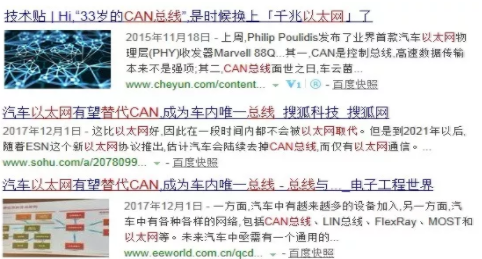
To begin with, let’s get to the point:
As of now, Ethernet cannot fully replace the CAN bus in vehicles. It may be used as a complementary system for high-speed data transmission, but it’s not going to take over the role of the CAN bus entirely.
If you’re still curious and want to understand why, keep reading. This short article will explain the reasons behind this conclusion — it might take you about three minutes, but it’ll give you a clear picture of the limitations of Ethernet in automotive applications.

As we know, Ethernet offers higher speed and longer transmission distance compared to the CAN bus. It’s also a mature technology with widespread adoption. In fact, it's already being used in modern vehicles for high-speed data like radar and video signals. So why can’t Ethernet completely replace the CAN bus in car networks? The answer lies in several key factors.
1. CAN Network Security
From a network architecture perspective, the CAN bus uses physical signal connections, while Ethernet relies on switches. In an Ethernet setup, if the switch fails, the entire network could crash. That’s a big risk, especially when safety is a top priority in vehicles. Adding redundant switches would increase costs significantly. On the other hand, the CAN bus is simple — just two wires are needed, making it stable and reliable. Plus, Ethernet uses a timeout retransmission mechanism, which can cause failures to spread across the network. Compared to the hierarchical arbitration system of CAN, Ethernet falls short in terms of reliability.
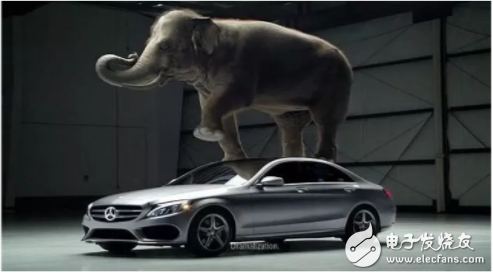
2. Cost Considerations
We’ve mentioned switches before, and they are essential in Ethernet networks. However, modern vehicles have a massive number of nodes, and connecting them all via Ethernet would require multiple high-capacity switches. For a vehicle where safety and reliability are critical, these switches must meet extremely high standards, which drives up the cost. Car manufacturers aren’t willing to accept such a significant increase in expenses, especially when the CAN bus already performs well for most functions.

3. Software Stability and Security
Think about the movie “Fast & Furious 8.†You might remember the scene where hackers take control of cars and cause chaos. While that was fictional, it highlights a real concern: cars connected to the internet could be vulnerable to cyberattacks. Ethernet, as an open standard, allows for easy data sharing and compatibility, but this also makes it more susceptible to hacking. In contrast, the CAN bus is a dedicated field bus, making it harder for external threats to penetrate. This makes it more secure for automotive applications.

To summarize, here’s a quick comparison:
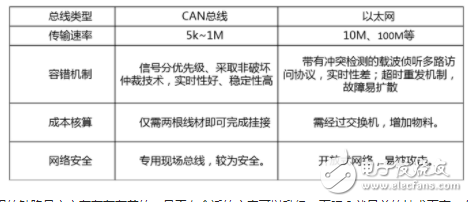
So, replacing the CAN bus with Ethernet isn’t feasible right now. However, the CAN bus has its own limitations, such as slower speeds and shorter communication distances. Is there a better solution? Yes — Vehicle Ethernet combined with CAN FD. This hybrid approach retains the real-time and safety features of the CAN bus while improving speed and range. It’s a smart upgrade that balances performance, cost, and security.
CAN FD greatly increases the data field size, supporting up to 64 bytes. When the DLC is 8 or less, it works the same as traditional CAN. But once it goes beyond 8, the data length increases non-linearly, allowing for much larger data packets.
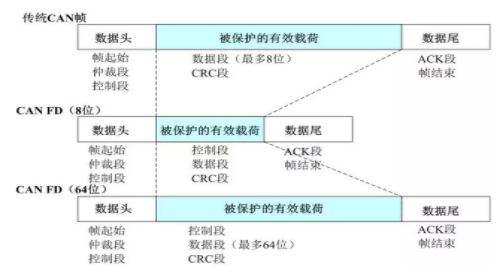
ZLG Zhiyuan Electronics offers the USBCANFD-200U interface card, providing full support for CAN FD technology. With extensive field experience, they are committed to delivering reliable solutions for industrial users.
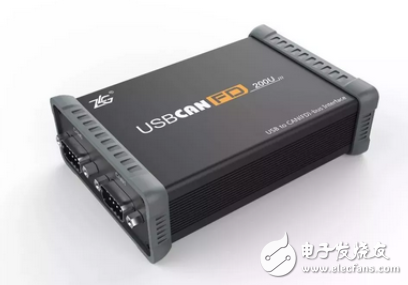
Pwm Line Interactive UPS,Simulated Sine Wave,Offline UPS,CPU Control
Shenzhen Unitronic Power System Co., Ltd , https://www.unitronicpower.com